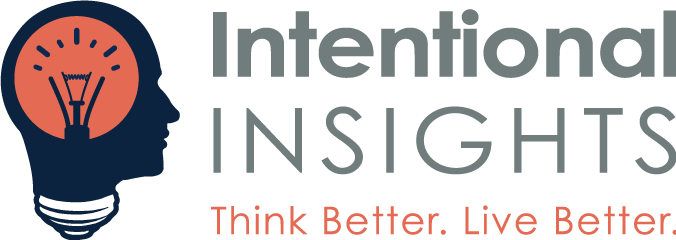
The COVID-19 pandemic thrust remote work into the mainstream. Organizations across every industry were forced to adapt quickly to a new reality of employees working from home. Video conferencing platforms like Zoom became ubiquitous overnight.
Now, as we enter the “new normal,” companies are adopting hybrid work models that blend remote and in-office employees. One of the biggest challenges is enabling effective collaboration in this hybrid environment. Especially during meetings with some attendees in-person and others dialing in remotely.
To gain insights on this topic, I spoke with Nancy Knowlton, CEO of Nureva, a leading provider of audio-visual solutions for hybrid meetings and learning spaces. She shared perspectives on why optimizing the remote worker experience is crucial for organizations embracing hybrid work.
Gaining Empathy for the Remote Perspective
When the pandemic hit, knowledge workers globally experienced – many for the first time – what it’s like being a remote worker. Knowlton explained how this shared experience led to greater empathy and understanding:
“We were all remote during COVID, and we know how exhausting being remote can be. Listening isn’t nearly as engaging as contributing to a collaboration session. We all know how hard it can be to break in and make our point. This experience means that we all are suddenly more understanding of remote participants and how they are experiencing their circumstances.”
Pre-pandemic, remote participants were often an afterthought in meetings. Now, there is broader recognition that optimizing the remote experience is crucial for engagement and inclusion.
As Knowlton noted, enabling hybrid meetings requires looking at “how should we ensure that remote participants are actively engaged and participating?”
Overcoming Technology Barriers
A perennial challenge in equipping for hybrid meetings is overcoming barriers around budget, expertise, and IT resources.
Traditionally, delivering good audio, video, and content sharing in larger meeting rooms required multiple hardware components. Expert calibration and constant maintenance was needed.
The complexity added costs and stretched IT teams thin. It also limited which spaces could be enabled for seamless hybrid collaboration.
Innovative solutions are emerging to simplify hybrid meeting technology. For example, intelligent audio systems that provide full room coverage with minimal hardware and easy setup. And smart cameras powered by AI to automatically track and frame active speakers.
Technology like this removes friction so organizations can focus on collaboration versus technical complexity. It allows more spaces to be enabled for hybrid meetings in a scalable, cost-effective manner.
Designing for Inclusion
Enabling smooth hybrid meetings is about more than technology alone. It requires thinking holistically about meeting practices and norms that disadvantage remote participants.
For example, office culture often defaults to in-person gatherings without considering remote attendees. Or cameras only show in-room participants. Little effort is made to directly engage remote workers.
Subtle cues like muting reminders, live transcriptions, and reserving part of the agenda for remote updates make meetings more inclusive. Technology can assist through innovations like intelligent camera tracking, automatic gain control on microphones, or post-meeting note distribution. The key is anticipating needs from the remote perspective and designing intentionally for engagement and equality.
Adopting a Remote-First Mindset
To fully realize the promise of hybrid work, organizations must go beyond simply accommodating remote employees. They need to adopt a “remote-first” philosophy.
This means evaluating every aspect of the meeting workflow from the remote worker point of view:
- Before – Intuitive scheduling based on employee location. Proactive tech checks. Published agendas and pre-reads.
- During – Inclusive practices like round robin updates and soliciting remote feedback. Cameras show all participants. Smart audio provides clear sound. Real-time transcription or summaries.
- After – Post-meeting notes distributed automatically. Follow-ups reference remote contributions.
A remote-first mindset also means investing in solutions expressly designed around the remote worker experience – not adaptations of existing office-centric tools. When people can focus on communication versus technology, it removes barriers to better collaboration, more inclusive meetings, and more engaged participants regardless of location.
Remote Experience as a Strategic Priority
Some may view optimizing the remote worker experience as a “nice-to-have” versus strategic priority. However, it’s becoming a critical issue for attracting talent, improving productivity, and driving innovation.
As Knowlton explained, “Supporting hybrid work shows the organization cares and has a heart, even as the focus remains on getting work done.”
Flexibility and work-life balance are now top workforce motivators. Providing technology and practices that remove friction for remote participants demonstrates an organization’s commitment to inclusion.
There is also a strong business case, with studies showing hybrid teams generate more creative ideas and make higher quality decisions compared to fully co-located or fully remote groups. But this requires valuing remote and in-office workers equally. Companies that empower hybrid teams to collaborate seamlessly will gain competitive advantage.
Intentional Change Management
Transitioning to a “remote-first” mindset doesn’t happen by accident. It requires:
- Stakeholder buy-in – getting leadership alignment on remote experience as a priority.
- Change management – updating policies, meetings norms, tech stacks, and budgets to support hybrid work.
- Training – educating managers and employees on inclusive meeting practices.
- Measurement – tracking engagement levels and gathering feedback from remote participants.
This intentionality is crucial. Otherwise organizations risk reverting to old habits that exclude remote workers. Proactively communicating the “why” behind these changes also accelerates adoption. Helping people understand how intentionally inclusive practices unlock productivity and innovation.
The Remote Experience Imperative
The pandemic revealed gaps in technology, processes, and mindsets that disadvantage remote participants. Now, the remote experience can no longer be an afterthought.
As I tell the 5-10 leaders I speak with every week on helping them figure out their flexible work policy, companies have a tremendous opportunity to reimagine meetings, technology, and culture in service of greater inclusion. But this requires elevating the remote perspective to a top priority. Optimizing for the remote worker experience leads to more collaborative and innovative hybrid teams. It signals an organization’s commitment to flexible work-life balance.
The takeaway is that hybrid meetings will only fulfill their potential when remote participants can contribute equally as colleagues down the hall. This is no longer a “nice-to-have” – it’s a business imperative.
Key Take-Away
Shared pandemic experiences highlighted the challenges of remote work, fostering greater understanding and inclusion for remote participants…>Click to tweet
Image credit: fauxels/pexels
Originally published in Disaster Avoidance Experts




